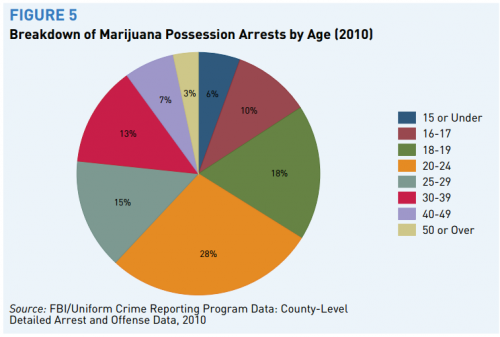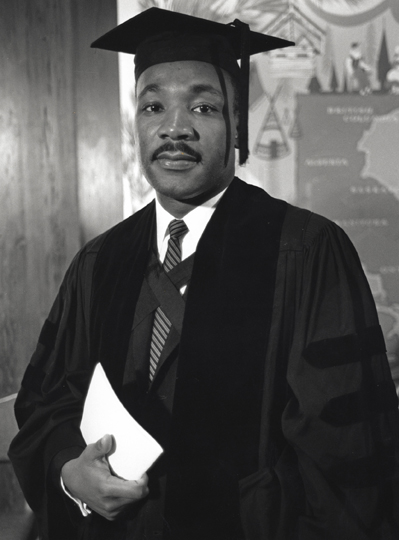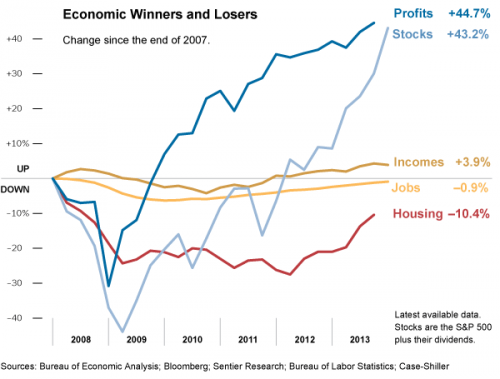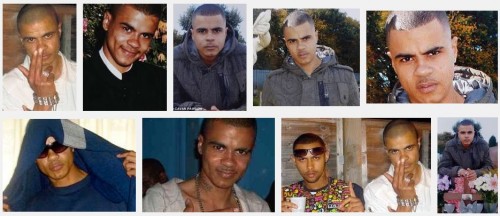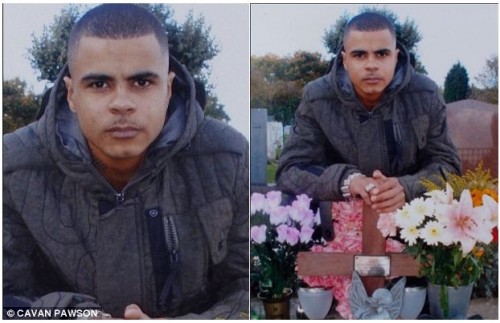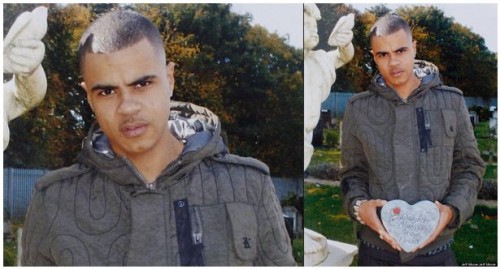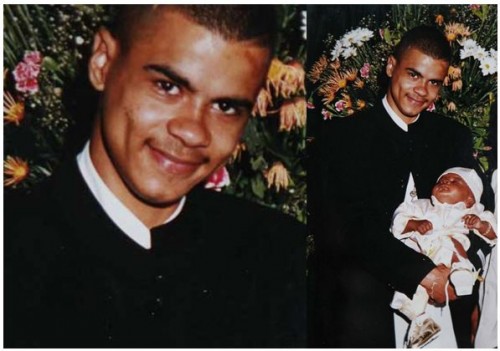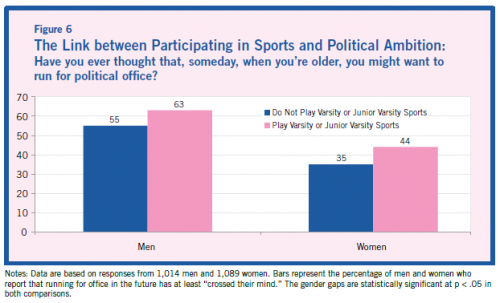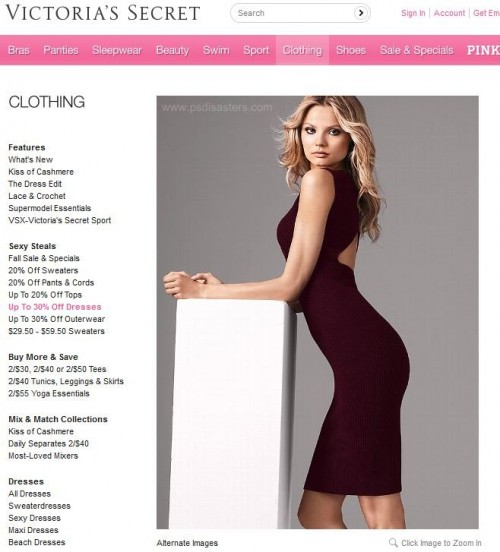Young black adults are less likely than whites to use marijuana, but extraordinarily more likely to be arrested for its use, according to a new report by the ACLU. This is old news, but the data never fails to stun.
First, notice that arrests for marijuana possession have grown over the past 15 years, even relative to arrests for other types of drugs. The first chart is total marijuana possession arrests, the second is the percent of all drug arrests that were for marijuana (note that in neither chart does the vertical axis start at zero and truncated axes tend to make data look more dramatic, as if that were necessary here).
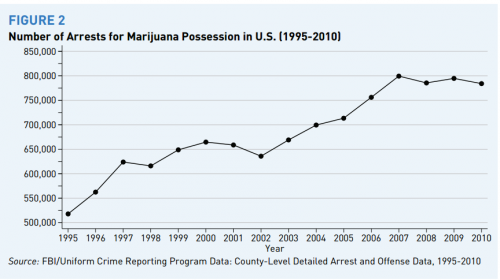
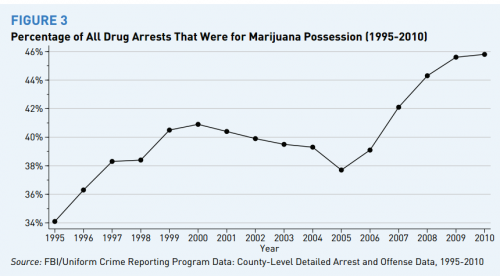 This rise in arrests has disproportionately affected African Americans. The arrest rate for blacks has consistently been substantially higher than that of whites, but it increased, even so, over the 2000s.
This rise in arrests has disproportionately affected African Americans. The arrest rate for blacks has consistently been substantially higher than that of whites, but it increased, even so, over the 2000s.
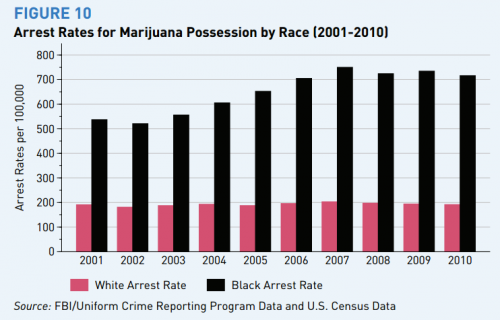
According to the report:
…in every state the Black arrest rate is disproportionate to Blacks’ percentage of the population. In fact, in 42 states the Black percentage of marijuana possession arrests is more than double the Black percentage of the population, while in 18 states Blacks account for more than three times the percentage of marijuana possession arrests than they do of the population. In four states, the difference is a factor of at least four.
Most of these arrests are of young people. Almost half (46%) involve 18 to 24 year olds:
The black arrest rate cannot be attributed to different rates of use. Overall, blacks and whites have very similar rates of marijuana use (the first figure below), but among 18 to 25 year olds — the population being arrested the most — whites have slightly higher rates than blacks (second figure):
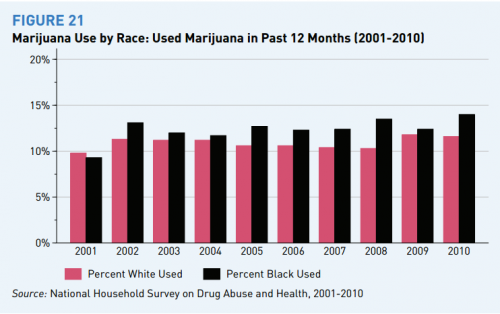
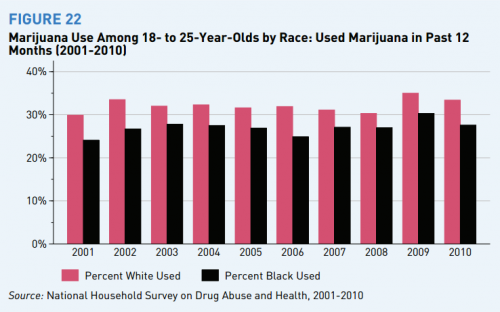 This is a long-standing, well-documented Civil Rights issue. The war on drugs is a war on black people. These practices are harmful to individuals, their families, and their communities. It functions to further the disadvantage faced by black Americans in a society rife with institutions already stacked against them.
This is a long-standing, well-documented Civil Rights issue. The war on drugs is a war on black people. These practices are harmful to individuals, their families, and their communities. It functions to further the disadvantage faced by black Americans in a society rife with institutions already stacked against them.
More than half of Americans would like to see marijuana legalized. Legalizing or decriminalizing marijuana would relieve this egregious attack on black communities and save states billions of dollars. There is little downside. Relative to other substances, it’s a minor problem.
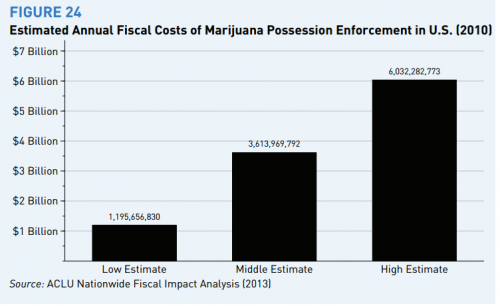 Cross-posted at Pacific Standard.
Cross-posted at Pacific Standard.
Lisa Wade, PhD is an Associate Professor at Tulane University. She is the author of American Hookup, a book about college sexual culture; a textbook about gender; and a forthcoming introductory text: Terrible Magnificent Sociology. You can follow her on Twitter and Instagram.

